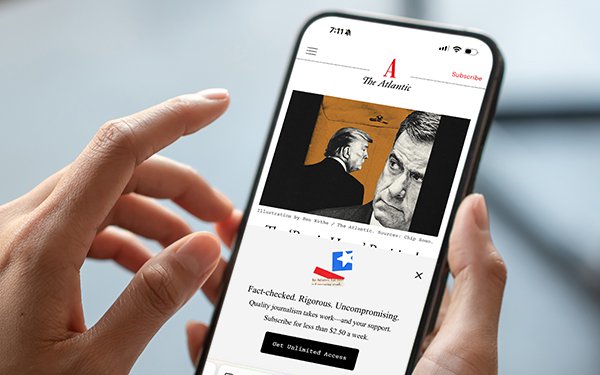
This reporter clicks through to many
stories online, and is always aggravated when a paywall pops up.
It’s one thing if the publication asks for a donation so it can continue providing excellent journalism. It’s
another if it is a magazine or big-city daily trying to squeeze every dime it can from each single engagement.
There is a solution for publishers trying to find a middle ground
– give some content away for free, according to a new study from Make It Free: Seeing the Data Forest Through the Digital Trees.
“Digital paywalls, of course,
are old news – newspaper publishers have been using them since the 2010s,” the study states. “The newer update is the smart (or dynamic) paywall, which uses a sophisticated
algorithm to determine whether or not a non-subscribed, non-registered user is likely to convert – in other words, whether the user has intention."
advertisement
advertisement
That’s not an easy chore
when 90% of consumers have no intention of paying for a subscription at any time. But publishers can create intent by providing a free sample, like some brands do in
supermarkets.
“Instead of continuing to stop engagement between your mass of consumer traffic and your product, you can get paid net revenue every single time you tell a consumer,
Yes, you can have this article for free,” the study states.
What’s the logic?
“This removes a negative experience that is literally turning away your potential
consumers, the study argues. “In its place, you’ll generate a positive experience that allows your consumer to engage with your product, improves customer relationships, enhances brand
reputation, and builds loyalty, all while increasing your profits.”
How does this work? First, you have to add the company’s “Make It Free” button to your
paywall.
“When a No-Intention consumer hits your paywall, all they need to do is click that button,” the study notes. “The consumer can then choose to provide us with
their email and opt in to receive four targeted emails – in exchange for access to a free article from you.”
Some – maybe a third – will later
convert, at least to a newsletter.
Of course, there are other dynamic options, like the single paid read. In cases where the person is reading the article for professional reasons,
you can charge a modest amount to access it.
Then there are the no-pays who might be ripe for a new product.
For instance, someone trying to read a sports story could be a
prospect for a paid newsletter and events. And if a person in Boston is clicking into an article in St. Louis, they are probably not a prospect for a paid subscription. But you need volunteered data
to determine that, and an algorithm that can discern when a person is clicking through to an entertainment story, say, or an obituary.
We take issue with one statement in the study that
hearkens back to news vendors hawking stories to sell their papers.
In those days, you could buy a newspaper on the stand and not have to subscribe or give them information to read
it.
We have one more suggestion. Soften the tone of those notices that say, "This is your last free article.” They have all the charm of crowd control people at a rock
concert.